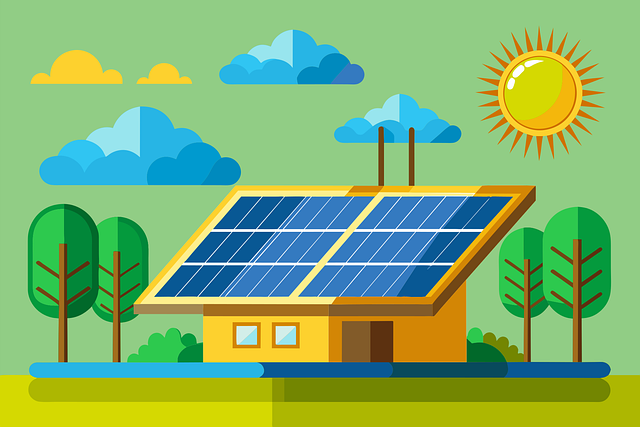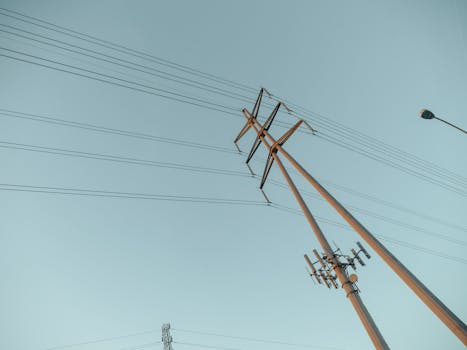“Lightweight, cost-effective, and corrosion-resistant: Aluminum wire powers your solar future.”
Aluminum wire has emerged as a popular choice in solar installations due to its numerous advantages over traditional copper wiring. One of the primary benefits is its lightweight nature, which simplifies handling and installation, reducing labor costs and time. Additionally, aluminum wire is more cost-effective than copper, making it an attractive option for large-scale solar projects. Its excellent conductivity, when properly sized, allows for efficient energy transfer, while its resistance to corrosion enhances the longevity and reliability of solar systems. Furthermore, advancements in aluminum wire technology have improved its performance, making it a viable alternative for both residential and commercial solar applications. Overall, the use of aluminum wire in solar installations contributes to enhanced efficiency, reduced costs, and increased durability.
Lightweight Advantages of Aluminum Wire in Solar Installations
The lightweight advantages of aluminum wire in solar installations are significant and contribute to the overall efficiency and effectiveness of solar energy systems. As the demand for renewable energy sources continues to rise, the materials used in solar installations are increasingly scrutinized for their performance characteristics. Aluminum wire, in particular, has emerged as a preferred choice for many solar applications due to its unique properties.
One of the most compelling benefits of aluminum wire is its low density, which makes it considerably lighter than copper wire. This lightweight nature simplifies the installation process, allowing for easier handling and transportation. When installing solar panels, especially in large arrays, the reduced weight of aluminum wire can lead to lower labor costs and faster installation times. This is particularly advantageous in large-scale solar farms, where efficiency in both time and resources is crucial. Moreover, the ease of installation can also reduce the risk of damage to the panels and other components, as workers can maneuver more easily without the burden of heavy materials.
In addition to its lightweight properties, aluminum wire also offers excellent conductivity, which is essential for efficient energy transfer in solar installations. While copper has traditionally been the go-to material for electrical wiring due to its superior conductivity, advancements in aluminum wire technology have significantly improved its performance. Modern aluminum wires are often coated or treated to enhance their conductivity, making them a viable alternative to copper. This means that, despite being lighter, aluminum wire can still effectively transmit the electricity generated by solar panels to inverters and the grid, ensuring that energy losses are minimized.
Furthermore, the lightweight nature of aluminum wire can lead to additional structural benefits in solar installations. For instance, when using lighter wiring, the overall weight of the solar array is reduced, which can lessen the load on mounting structures. This reduction in weight can be particularly beneficial in areas where building codes impose strict weight limits or where the structural integrity of rooftops is a concern. By utilizing aluminum wire, installers can design more efficient and cost-effective mounting systems that do not compromise on safety or performance.
Another important aspect to consider is the long-term durability of aluminum wire. While some may argue that aluminum is more susceptible to corrosion than copper, advancements in wire coatings and insulation have mitigated these concerns. Many aluminum wires are now designed to withstand harsh environmental conditions, making them suitable for outdoor applications. This durability ensures that the lightweight advantages of aluminum wire are not offset by a shorter lifespan, ultimately leading to lower maintenance costs and a more reliable solar installation.
In conclusion, the lightweight advantages of aluminum wire in solar installations are multifaceted and contribute to the overall effectiveness of solar energy systems. From simplifying installation processes to enhancing structural integrity and ensuring efficient energy transfer, aluminum wire presents a compelling case for its use in renewable energy applications. As the industry continues to evolve, the adoption of aluminum wire is likely to grow, driven by its combination of lightweight properties, improved conductivity, and long-term durability. By embracing this innovative material, solar energy systems can achieve greater efficiency and reliability, paving the way for a more sustainable future.
Cost-Effectiveness of Aluminum Wire Compared to Copper

When considering the materials used in solar installations, the choice between aluminum and copper wire is pivotal, particularly in terms of cost-effectiveness. Aluminum wire has gained traction in the solar industry, primarily due to its lower initial cost compared to copper. This affordability is a significant factor for both residential and commercial solar projects, where budget constraints often dictate material selection. The price of copper has historically been higher, influenced by its demand in various industries, including electronics and construction. Consequently, the use of aluminum wire can lead to substantial savings, making solar energy more accessible to a broader audience.
Moreover, the cost-effectiveness of aluminum wire extends beyond its initial purchase price. While aluminum has a lower conductivity than copper, advancements in technology have allowed for the development of larger gauge aluminum wires that can effectively carry the same amount of current as their copper counterparts. This means that, although aluminum wire may require a larger diameter to achieve equivalent performance, the overall installation costs can still be reduced. The savings come not only from the wire itself but also from the reduced labor costs associated with handling and installing lighter aluminum wires. This ease of installation can lead to quicker project completion times, further enhancing the economic benefits of using aluminum in solar installations.
In addition to the direct cost savings, aluminum wire also offers long-term financial advantages. Solar installations are designed to last for decades, and the durability of aluminum wire plays a crucial role in the overall lifespan of the system. Aluminum is resistant to corrosion, especially when properly treated, which can mitigate maintenance costs over time. While copper wire may offer superior conductivity, it is also more susceptible to corrosion, particularly in harsh environmental conditions. This susceptibility can lead to increased maintenance and replacement costs, which can offset the initial savings gained from using copper.
Furthermore, the weight of aluminum wire contributes to its cost-effectiveness. Being significantly lighter than copper, aluminum wire reduces the structural requirements for mounting systems and supports. This reduction in weight can lead to lower material costs for racking systems and can simplify the installation process, allowing for a more efficient use of labor and resources. As a result, the overall cost of the solar installation can be significantly lowered, making aluminum an attractive option for both small-scale and large-scale projects.
Transitioning to aluminum wire also aligns with the growing emphasis on sustainability within the solar industry. As the demand for renewable energy sources increases, the need for cost-effective solutions becomes paramount. By choosing aluminum, installers can contribute to a more sustainable future while also benefiting from the economic advantages it offers. The combination of lower material costs, reduced labor expenses, and long-term durability makes aluminum wire a compelling choice for solar installations.
In conclusion, the cost-effectiveness of aluminum wire compared to copper is evident in various aspects of solar installations. From initial savings to long-term financial benefits, aluminum wire presents a viable alternative that can enhance the overall efficiency and affordability of solar energy systems. As the industry continues to evolve, the advantages of aluminum wire will likely play a crucial role in promoting wider adoption of solar technology, ultimately contributing to a more sustainable energy landscape.
Corrosion Resistance of Aluminum Wire for Long-Term Durability
When considering materials for solar installations, one of the most critical factors to evaluate is the long-term durability of the components used. Among these components, aluminum wire stands out due to its remarkable corrosion resistance, which significantly contributes to the longevity and reliability of solar energy systems. This characteristic is particularly important in environments where exposure to moisture, salt, and other corrosive elements is prevalent. Unlike copper, which can corrode over time when exposed to certain environmental conditions, aluminum wire maintains its integrity, ensuring that the electrical connections remain secure and efficient.
The corrosion resistance of aluminum wire is primarily attributed to its natural oxide layer. When aluminum is exposed to air, it forms a thin layer of aluminum oxide that acts as a protective barrier against further oxidation. This oxide layer is not only stable but also adheres strongly to the underlying metal, preventing moisture and other corrosive agents from penetrating and causing damage. As a result, aluminum wire can withstand harsh weather conditions, including heavy rain, humidity, and even saline environments, making it an ideal choice for solar installations located near coastal areas.
Moreover, the lightweight nature of aluminum wire enhances its usability in solar applications. This lightweight characteristic allows for easier handling and installation, reducing labor costs and time. When combined with its corrosion resistance, aluminum wire becomes a practical solution for solar panel connections, especially in large-scale installations where extensive wiring is required. The reduced weight also minimizes the structural load on mounting systems, which can be particularly beneficial in regions prone to high winds or heavy snowfall.
In addition to its physical properties, the economic advantages of using aluminum wire cannot be overlooked. While the initial cost of aluminum wire may be slightly higher than that of copper, the long-term savings associated with its durability and reduced maintenance needs can be substantial. Since aluminum wire is less likely to require replacement or repair due to corrosion-related failures, solar system owners can enjoy a more reliable and cost-effective energy solution over the lifespan of their installations. This economic benefit is further amplified by the increasing efficiency of solar technology, which means that systems designed with durable materials like aluminum wire can yield higher returns on investment.
Furthermore, the environmental impact of using aluminum wire in solar installations is also noteworthy. Aluminum is highly recyclable, and utilizing it in solar applications contributes to a more sustainable energy infrastructure. As the demand for renewable energy sources continues to grow, the use of materials that promote longevity and reduce waste becomes increasingly important. By choosing aluminum wire, solar installers not only enhance the durability of their systems but also align with broader environmental goals.
In conclusion, the corrosion resistance of aluminum wire plays a pivotal role in ensuring the long-term durability of solar installations. Its ability to withstand harsh environmental conditions, combined with its lightweight nature and economic advantages, makes it a superior choice for solar applications. As the renewable energy sector continues to evolve, the emphasis on using durable and sustainable materials like aluminum wire will undoubtedly contribute to the overall success and reliability of solar energy systems. By investing in aluminum wire, stakeholders can ensure that their solar installations remain efficient and effective for years to come, ultimately supporting the transition to a cleaner and more sustainable energy future.
Enhanced Conductivity and Efficiency of Aluminum Wire in Solar Systems
Aluminum wire has emerged as a compelling choice in solar installations, particularly due to its enhanced conductivity and efficiency. As the demand for renewable energy sources continues to rise, understanding the materials that contribute to the effectiveness of solar systems becomes increasingly important. One of the primary advantages of aluminum wire is its excellent conductivity, which is crucial for the efficient transmission of electricity generated by solar panels. While copper has long been the standard for electrical wiring, aluminum offers a competitive alternative that can lead to significant cost savings without compromising performance.
One of the key factors that contribute to the efficiency of aluminum wire is its lightweight nature. This characteristic not only makes it easier to handle and install but also reduces the overall weight of the solar installation. Lighter wiring can lead to less structural stress on mounting systems, which is particularly beneficial in large-scale solar farms where the cumulative weight of materials can be substantial. Furthermore, the reduced weight can facilitate faster installation times, allowing for quicker project completion and a more efficient deployment of resources.
In addition to its lightweight properties, aluminum wire has a lower thermal expansion coefficient compared to copper. This means that aluminum is less likely to expand and contract with temperature fluctuations, which can help maintain the integrity of connections over time. As solar installations are often exposed to varying weather conditions, this stability can enhance the longevity and reliability of the system. Consequently, the reduced risk of connection failures translates into lower maintenance costs and improved overall system performance.
Moreover, aluminum wire is inherently more resistant to corrosion than copper, particularly in environments where moisture and humidity are prevalent. This resistance to corrosion is vital for solar installations, as the wiring is often exposed to the elements. By utilizing aluminum wire, installers can ensure that the electrical connections remain intact and efficient over the lifespan of the solar system. This durability not only enhances the performance of the installation but also contributes to the sustainability of the energy produced, as less energy is lost due to degraded connections.
Another significant benefit of aluminum wire is its cost-effectiveness. Aluminum is generally less expensive than copper, making it an attractive option for large-scale solar projects where budget constraints are a primary concern. By opting for aluminum wire, project developers can allocate resources more effectively, potentially allowing for the installation of additional solar panels or other components that enhance the overall system capacity. This financial advantage can be particularly impactful in regions where solar energy is being rapidly adopted, as it enables more widespread access to renewable energy solutions.
In conclusion, the enhanced conductivity and efficiency of aluminum wire make it a valuable asset in solar installations. Its lightweight nature, resistance to thermal expansion, and corrosion resistance contribute to the reliability and longevity of solar systems. Additionally, the cost-effectiveness of aluminum wire allows for more efficient use of resources, ultimately supporting the broader goal of increasing renewable energy adoption. As the solar industry continues to evolve, the role of materials like aluminum wire will undoubtedly play a crucial part in shaping the future of sustainable energy solutions. By embracing these advancements, stakeholders can ensure that solar installations are not only effective but also economically viable, paving the way for a greener future.
Q&A
1. **Question:** What is a primary benefit of using aluminum wire in solar installations?
**Answer:** Aluminum wire is lighter than copper wire, making it easier to handle and install, which can reduce labor costs.
2. **Question:** How does aluminum wire contribute to cost savings in solar installations?
**Answer:** Aluminum wire is generally less expensive than copper wire, leading to lower material costs for solar projects.
3. **Question:** What is an advantage of aluminum wire regarding conductivity in solar applications?
**Answer:** While aluminum has lower conductivity than copper, it can still effectively transmit electricity when sized appropriately, making it suitable for solar applications.
4. **Question:** How does aluminum wire perform in terms of corrosion resistance in solar installations?
**Answer:** Aluminum wire has good corrosion resistance, especially when properly treated, which enhances its longevity and reliability in outdoor solar environments.
Conclusion
Using aluminum wire in solar installations offers several benefits, including reduced material costs, lower weight for easier handling and installation, and excellent conductivity that can effectively support energy transmission. Additionally, aluminum’s resistance to corrosion enhances the longevity and reliability of solar systems. Overall, aluminum wire presents a cost-effective and efficient solution for optimizing solar energy systems.




